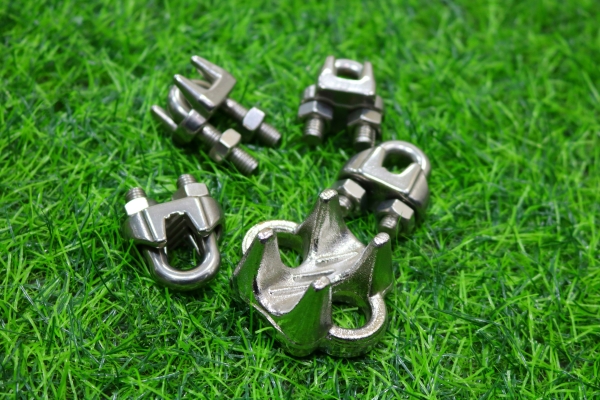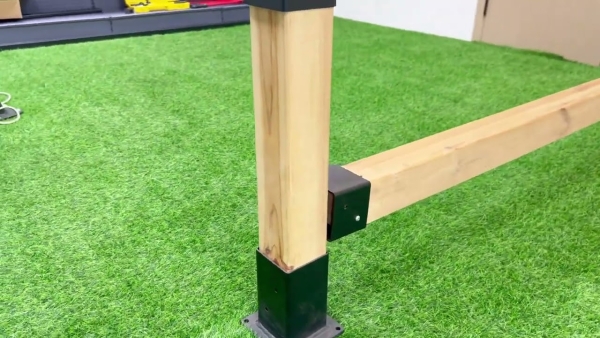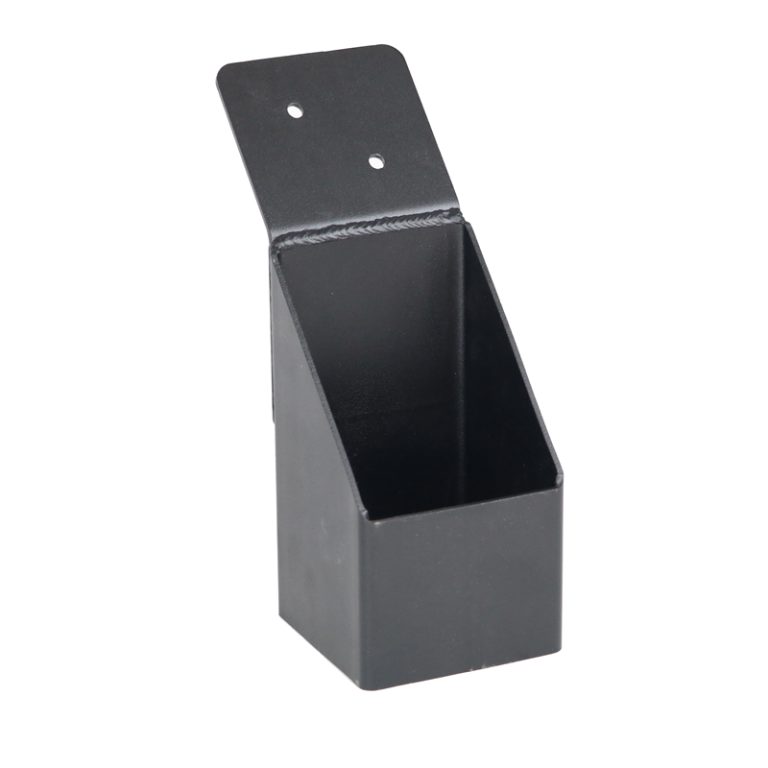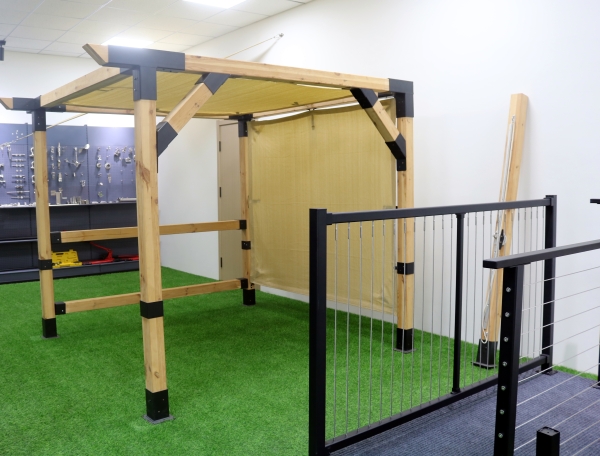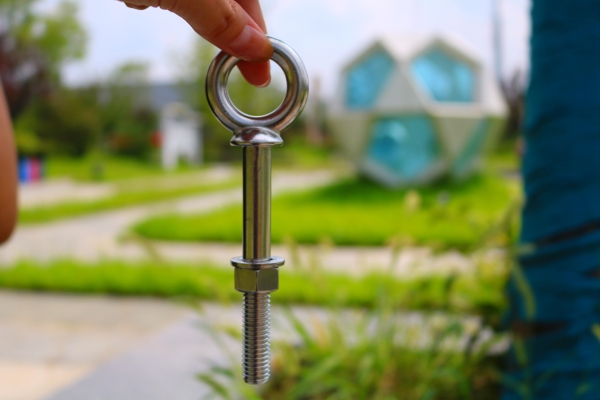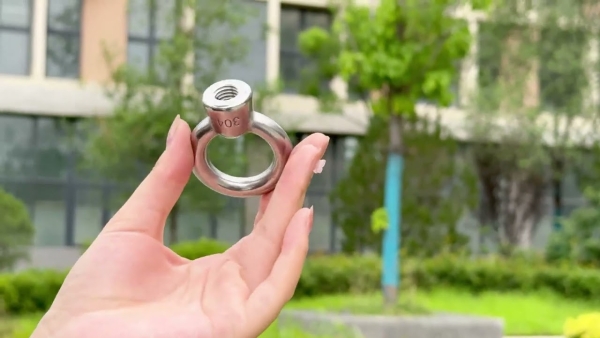إيجابيات وسلبيات البرجولات وشرفات المراقبة
أحد الاختلافات الرئيسية بين البرجولات وشرفات المراقبة هو تصميمها وبنيتها. البرجولات عادة ما تكون هياكل في الهواء الطلق مع سلسلة من الأعمدة أو الأعمدة الرأسية التي تدعم سقفًا مصنوعًا من العوارض أو الشبكة. يسمح هذا التصميم بالكثير من الضوء الطبيعي وتدفق الهواء، مما يجعل البرجولات مثالية لإنشاء منطقة جلوس خارجية مظللة أو ممشى. شرفات المراقبة، من ناحية أخرى، عبارة عن هياكل مغلقة بالكامل ذات سقف وجدران صلبة. يوفر هذا التصميم مزيدًا من الحماية من العناصر، مما يجعل شرفات المراقبة خيارًا أفضل لتناول الطعام في الهواء الطلق أو الترفيه في جميع أنواع الطقس.
الفرق الرئيسي الآخر بين البرجولات وشرفات المراقبة هو حجمها وشكلها. عادة ما تكون البرجولات أكبر حجمًا وأكثر انفتاحًا من شرفات المراقبة، مما يجعلها خيارًا رائعًا لإنشاء منطقة معيشة خارجية واسعة. من ناحية أخرى، عادة ما تكون شرفات المراقبة أصغر حجمًا وأكثر إحكاما، مما يجعلها أكثر ملاءمة للساحات أو الحدائق الصغيرة. بالإضافة إلى ذلك، غالبًا ما تتميز شرفات المراقبة بتصميم أكثر زخرفية ومزخرفة، مع ميزات مثل المنحوتات المعقدة أو الزخارف الزخرفية، بينما تميل العريشة إلى الحصول على جمالية أبسط وأكثر بساطة.
من حيث الوظائف، تقدم العريشة وشرفات المراقبة فوائد مختلفة. تعتبر البرجولات رائعة لتوفير الظل وإنشاء منطقة جلوس خارجية مريحة، لكنها قد لا توفر قدرًا كبيرًا من الحماية من العناصر مثل شرفات المراقبة. من ناحية أخرى، توفر شرفات المراقبة مساحة مغلقة بالكامل يمكن استخدامها لتناول الطعام في الهواء الطلق أو الترفيه أو حتى كمساحة عمل محمية. ومع ذلك، فإن التصميم المغلق لشرفات المراقبة يمكن أن يجعلها أيضًا أكثر تقييدًا وأقل انفتاحًا من العريشة.
عندما يتعلق الأمر بالصيانة، فإن العريشة وشرفات المراقبة لها أيضًا متطلبات مختلفة. عادةً ما تكون صيانة البرجولات أسهل، لأنها تحتوي على مكونات أقل وأكثر انفتاحًا على العناصر. من ناحية أخرى، قد تتطلب شرفات المراقبة المزيد من الصيانة المنتظمة للحفاظ على السقف والجدران في حالة جيدة. بالإضافة إلى ذلك، فإن التصميم المغلق لشرفات المراقبة يمكن أن يجعلها أكثر عرضة لنمو العفن أو الفطريات، خاصة في المناخات الرطبة.
في الختام، تتمتع كل من العريشة وشرفات المراقبة بمزايا وعيوب فريدة خاصة بها. تعتبر البرجولات رائعة لإنشاء منطقة معيشة خارجية واسعة ومفتوحة، في حين توفر شرفات المراقبة مساحة أكثر انغلاقًا وحماية. يعتمد الاختيار بين العريشة وشرفة المراقبة في النهاية على الاحتياجات والتفضيلات المحددة لصاحب المنزل. من خلال فهم الاختلافات الرئيسية بين البرجولات وشرفات المراقبة، يمكن لأصحاب المنازل اتخاذ قرار مستنير من شأنه تعزيز جمال ووظيفة المساحة الخارجية الخاصة بهم.
One of the main differences between pergolas and gazebos is their design and structure. Pergolas are typically open-air structures with a series of vertical posts or columns that support a roof made of beams or lattice. This design allows for plenty of natural light and airflow, making pergolas ideal for creating a shaded outdoor seating area or walkway. Gazebos, on the other hand, are fully enclosed structures with a solid roof and walls. This design provides more protection from the elements, making gazebos a better option for outdoor dining or entertaining in all types of weather.
Another key difference between pergolas and gazebos is their size and shape. Pergolas are usually larger and more open than gazebos, making them a great choice for creating a spacious outdoor living area. Gazebos, on the other hand, are typically smaller and more compact, making them better suited for smaller yards or gardens. Additionally, gazebos often have a more decorative and ornate design, with features such as intricate carvings or decorative trim, while pergolas tend to have a simpler and more minimalist aesthetic.
In terms of functionality, pergolas and gazebos offer different benefits. Pergolas are great for providing shade and creating a comfortable outdoor seating area, but they may not offer as much protection from the elements as gazebos. Gazebos, on the other hand, provide a fully enclosed space that can be used for outdoor dining, entertaining, or even as a sheltered workspace. However, the enclosed design of gazebos can also make them feel more confined and less open than pergolas.
When it comes to maintenance, pergolas and gazebos also have different requirements. Pergolas are typically easier to maintain, as they have fewer components and are more open to the elements. Gazebos, on the other hand, may require more regular maintenance to keep the roof and walls in good condition. Additionally, the enclosed design of gazebos can make them more prone to mold or mildew growth, especially in humid or damp climates.
In conclusion, both pergolas and gazebos have their own unique advantages and disadvantages. Pergolas are great for creating a spacious and open outdoor living area, while gazebos provide a more enclosed and protected space. The choice between a pergola and a gazebo will ultimately depend on the homeowner’s specific needs and preferences. By understanding the key differences between pergolas and gazebos, homeowners can make an informed decision that will enhance the beauty and functionality of their outdoor space.
